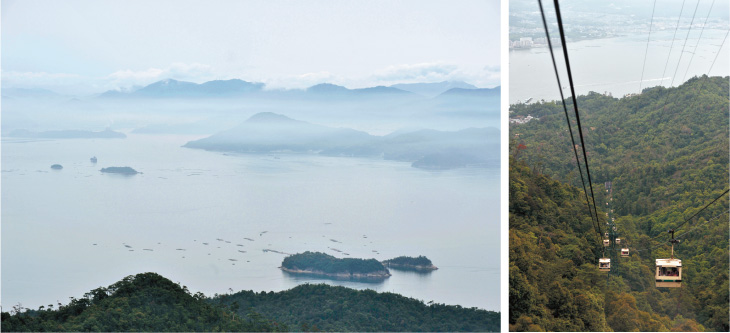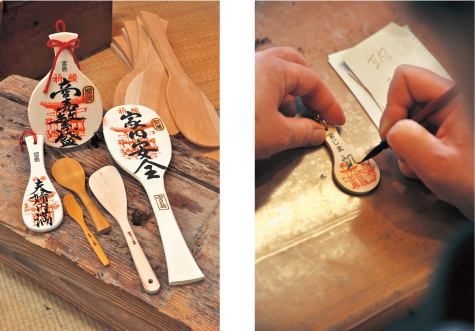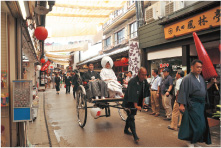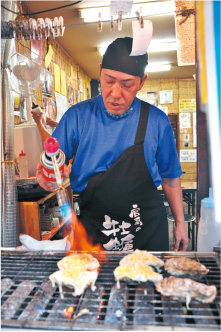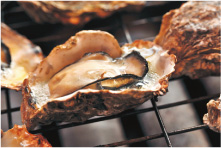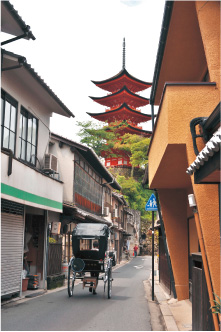niponica is a web magazine that introduces modern Japan to people all over the world.
2013 No.10

To read the e-book you need to have JavaScript enabled in your browser and a free Flash Player plug-in from Adobe Systems Inc. installed.
 Strolling Japan
Strolling Japan

Itsukushima
Shrine and the
Island of Miyajima
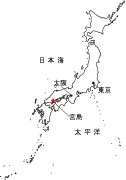
The shrine buildings are stupendous examples of architecture in a style dating back about 850 years. They were originally constructed under the orders of Taira no Kiyomori, the first man of military origin to hold political power in Japan. He had developed considerable economic influence through intensive trade with China, and the Seto Inland Sea was an extremely important maritime route for him. The island occupied a strategic position along the route, and he held strongly to the belief that the island was a sacred place for the god protecting navigation. The inner shrine standing today, reconstructed in the 16th century, is said to admirably depict the style of Kiyomori's time. The inner shrine is the focal point for a number of shrine buildings that are oriented toward the sea and connected with roofed corridors extending like the wings of a bird. One central feature is a long platform facing the torii. At high tide, the vermilion shrine buildings seem to float on the water, and this, together with the green highlands forming a backdrop, creates a truly magnificent scene.
If you visit at low tide you can walk out to the torii. It is 16 meters tall and stretches out 24 meters. Stand under it and look straight up—it has a special force and presence of its own. At 5 tons its weight defies the buoyant effect of water, and its stability against the force of water and gravity are part of its magical effect.
Mist over the Seto Inland Sea creates a dreamlike mood.
People at the lookout showed their pleasure with the scene verbally and by clicking their camera shutters time after time.
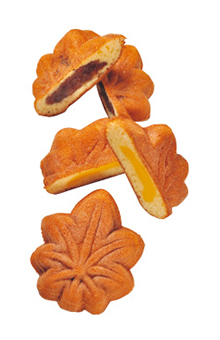
Small momiji manju sponge cakes come with many kinds of filling such as sweet bean paste, sweet beans, custard, chocolate, and matcha green tea.
After I paid my respects to the shrine I decided to climb to the highest point on Miyajima, Mount Misen. The entire mountain was revered, and today a lush virgin forest remains on its slopes. In autumn the leaves add color and beauty at Momijidani Park, and near there is the base for a ropeway system. It will take you up into the air and to the final station at the top, in about 20 minutes. Near there is the Shishi-iwa Lookout, offering a fine view of islands in the inland sea.
I came down Mount Misen and strolled to the Omotesando walkway leading to the shrine. It is lined with shops selling souvenirs and small restaurants. A forever-favorite souvenir from Miyajima is momiji manju, small sponge cakes in the shape of momiji maple leaves with a sweet bean paste or some other ingredient stuffed in the dough before baking. Many shops along the walkway bake the cakes right there, giving you an opportunity you will not want to miss. Another popular souvenir is Miyajima shamoji rice scoops, said to bring good luck. Specialty shops on the walkway have scoops for everyday use, of course, but also a lineup with a wish inscribed on them, like Shobai Hanjo ("success in business") and Kanai Anzen ("safety in the home").
"We can inscribe names on them right here," says one salesperson. "People from other countries often ask us to write their name on one in kanji characters."
I left the shop and walked a bit further, then noticed a nice smell wafting my way from somewhere. Oysters were being grilled on an open flame in a small shop. They live in the sea close to the island and have added to its fame. I wasted no time ordering some, and they made a light feast, breaking up my stroll perfectly.
The sun was sinking, letting Miyajima wrap itself in the mood of twilight. This gave the shrine a different kind of eloquence. After sunset and until 11:00 pm, the immense torii and shrine buildings are illuminated, making them float above the dark sea in a surreal tableau. Before heading for my lodging, I faced the shrine and put my hands together in prayer, giving thanks for the day I had spent with the island's gods.
A shop called Shakushi no Ie offers many kinds of ladles, spatulas, and butter knives. You can have your name or a message you like inscribed on a small ladle-shaped strap for your cellphone.
Left: "Grilling oysters must be done just right," says Yamada of the restaurant Miyajima no Kaki-kun. This is the only place where you can get oyster gratin, an opportunity not to be missed.
Right: After the hustle and bustle on the Omotesando walkway, it is nice to slip into the tranquility of Machiya-dori Street, once a busy place itself. In the background stands a five-storied pagoda constructed in 1407.
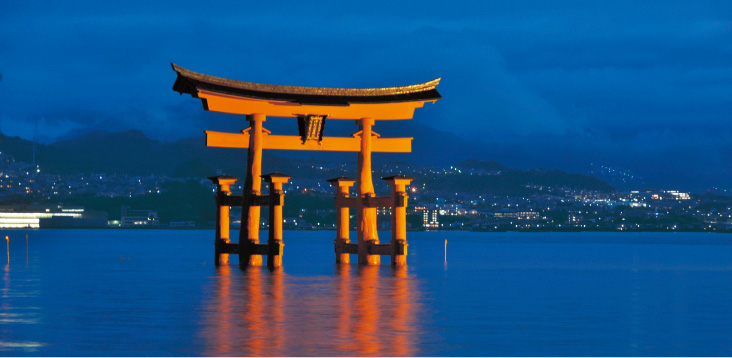
The immense torii gate is illuminated after dusk. Sometimes boats slip under its arch at high tide.
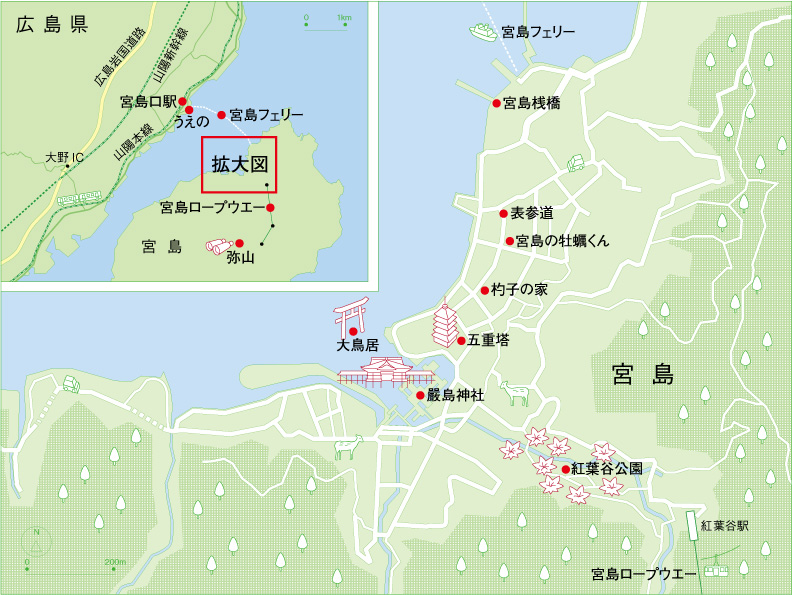
Getting there
From Narita International Airport (Tokyo), take the Narita express to Tokyo Station (about 1 hr). From there, about 4 hours on a Tokaido-Sanyo Shinkansen train to Hiroshima Station. (If you want to fly, about 80 min. from Haneda Airport (Tokyo) to Hiroshima Airport, then about a 50-min. bus ride to Hiroshima Station). From Hiroshima Station to Miyajima-guchi Station on the JR Sanyo Line, about 30 min. Then take the Miyajima ferry (about 10 min).
For more info
Miyajima official tourism website (Chinese, English, French, German, and Korean):http://visit-miyajima-japan.com/en/
Miyajima Tourist Association website (Chinese, English, French, German, and Korean):
http://www.miyajima.or.jp/english/



